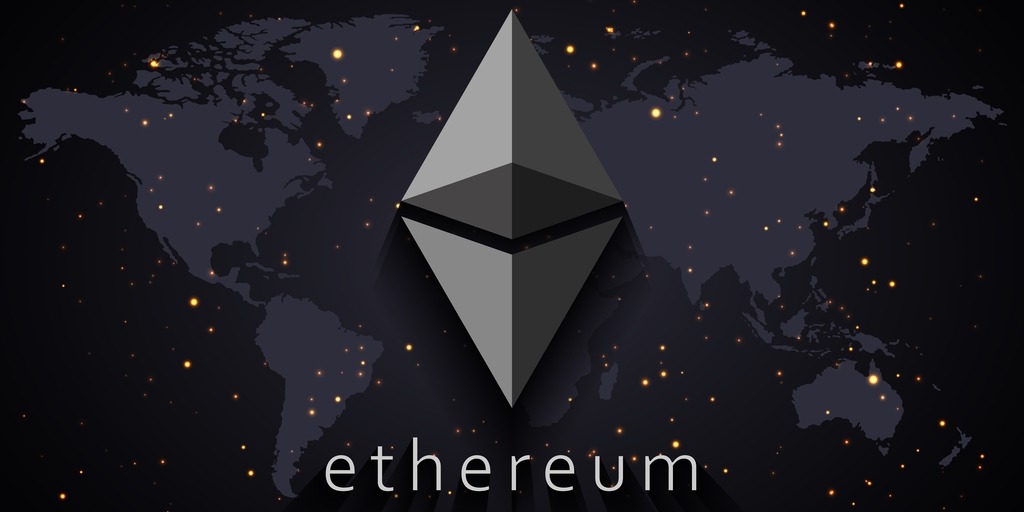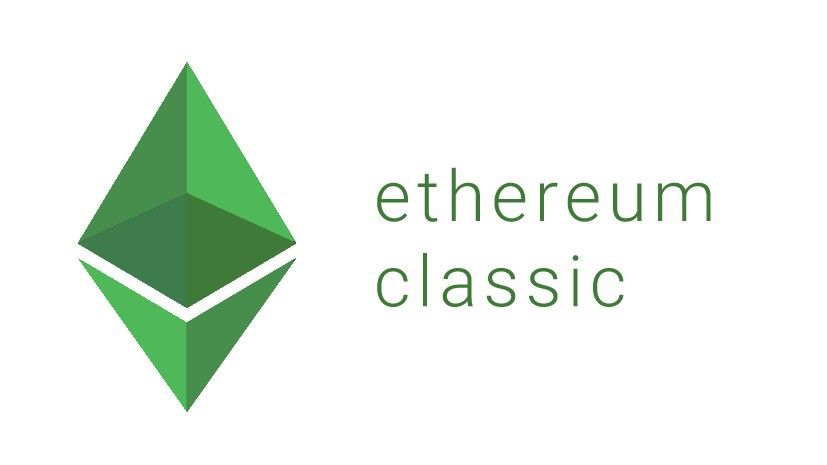What Is Ethereum Programming Language: Solidity?
The next crucial stage in the evolution of digital solutions is the emergence of decentralized applications. In addition to promoting the growth of the Defi ecosystem, they have opened the door to the potential of a vast array of innovative solutions for use cases in multiple industries. What part does the Solidity programming language play in Ethereum’s ecosystem of decentralized applications? In reality, most decentralized applications are developed on the open source and decentralized Ethereum blockchain.
Due to the usage of Solidity as the programming language for decentralized applications, their link to Ethereum can be validated. This section gives a step-by-step introduction to the foundations of Solidity programming and its core concepts. You may also learn about the many methods for getting started with Solidity programming, including detailed tutorials.
A Detailed Definition of Solidity Programming
In any discussion on Solidity, the significance of the question “What is Solidity Programming?” and the possible replies to that issue should be one of the first topics. Like any other kind of software or application, decentralized applications need a programming language to execute the code essential for their system.
Solidity is a contract-centric programming language and one of the most notable elements of the relationship between Solidity and Ethereum. Solidity is the most used programming language for developing smart contracts on the Ethereum network. Smart contracts are directly responsible for storing the programming logic that interacts with the blockchain as a direct result.
This statically typed, high-level programming language has many similarities with Python, C++, and JavaScript, among others. Solidity has been optimized for operation on the Ethereum Virtual Machine (EVM), also known as Ethereum nodes linked to the blockchain.
For the Ethereum network, the relevance of the Solidity programming language is predicated on its ability to create acceptable blockchain applications for commercial usage. It is a product of the Ethereum Network team and was designed primarily to develop smart contracts for blockchain systems.
Using Solidity, it is simpler to design smart contracts that guarantee business logic implementation, followed by creating a chain of transaction records inside the blockchain system. The primary objective of Solidity’s capabilities is to simplify the creation of machine-level code while also facilitating its compilation on Ethereum Virtual Machine, commonly known as EVM. In addition to a structure akin to that of other programming languages, Solidity includes concepts such as variables, classes, arithmetic operations, functions, and text data processing.
Know Everything About Solidity Programming in Ethereum https://t.co/30fhNNxMcz
— Metacoinics (@metacoinics) August 2, 2022
Construction of Solidity Programming Language
The rise of the Solidity programming language inside Ethereum is an essential additional topic for introducing the language used to create smart contracts. It is a very young language that is developing rapidly and undergoing modifications that may be deemed necessary. It is the primary language used to construct smart contracts on Ethereum now.
The Monax blockchain is based on Hyperledger Burrow, which uses the Tendermint consensus algorithm to achieve and maintain consensus. In addition, it may be used to create smart contracts for other private blockchain networks on sites that compete with Monax. In addition, SWIFT has developed a proof of concept using the Solidity programming language and the Burrow blockchain.
The Significance of Electronic Voting Devices and Intelligent Contracts
EVM and intelligent contracts are Solidity’s two most significant components, and gaining a deeper understanding of these areas will make you a better Solidity writer. The Ethereum Virtual Machine also referred to as EVM, is a crucial component for executing transactions on the Ethereum blockchain. It offers the environment required for the execution of Ethereum smart contracts. Let’s start by comprehending the role EVM plays in Solidity.
EVM’s primary objective is to safeguard user data from being damaged by malicious software utilizing a globally distributed network of public nodes. EVM ensures that dispersed applications cannot access one another’s state while simultaneously establishing acceptable, interruption-free communication paths. The technology’s most impressive feature is EVM’s capacity to prevent denial of service (DoS) attacks.
The notion of smart contracts is the next essential topic that you must be acquainted with before beginning Solidity programming. Without smart contracts, the Ethereum ecosystem could not work effectively. They are high-level scripts that must be compiled into the EVM before being placed on the Ethereum blockchain to permit execution.
One of the additional value advantages of smart contracts is the ability to conduct actual commercial transactions without the participation of third parties. Notably, the transactions associated with smart contracts are inherently irreversible and provide excellent tracking convenience. Solidity is one of the computer languages that may be used to design and write smart contracts. Mutant, LLL, and Serpent are examples of further frequently used programming languages for the development of smart contracts.
Types of Data Using Solidity
The Solidity programming language was inspired by various well-known high-level languages, such as C++. Both Python and JavaScript were implemented. Solidity is an object-oriented programming language with equivalent data types to other OOP languages. Solidity supports the OOP-standard data types boolean, integer, string, array, and modifier, among others. Also supported are array and string data types.
The Boolean data type evaluates the criteria and returns “1” if the condition is determined to be accurate and “0” if the state is persistent to be false.
The Integer data type in the Solidity programming language provides the capability to sign or unsign integer integers. Support for runtime exceptions and the ‘uint256’ and ‘uint8’ keywords is included in the powers of the integer data type.
The String data type in the Solidity programming language for the Ethereum blockchain allows the categorization of data as a string using single or double quotation marks.
The modifier is a vital data type in the Solidity programming language because of the purpose it serves before the execution of smart contract code. Before carrying out the instructions, the modifier must determine if a specific condition is compatible with logic.
Solidity array data types feature a syntax equivalent to other OOP languages. This is especially true given that Solidity supports both one-dimensional and multidimensional arrays.
The design of the Solidity programming language also includes the ability to map data structures with hash values, enums, and operators for returning values in specific storage locations.
The Easiest Method to Begin With Solidity
By studying the principles of Ethereum’s Solidity platform, anybody may begin developing and deploying smart contracts using Solidity. Before starting Solidity programming, obtaining the information required to get acquainted with the best practices is crucial. Before engaging with Solidity, you must familiarise yourself with its essential methods. This is the most critical stage by far. Here are a handful of the more remarkable examples of fundamental code in the Solidity programming language, along with an explanation of their significance.
Version Pragma
In Solidity, pragmas are similar to directives in that they notify the compiler of several methods to handle code. Therefore, adding a version pragma’ at the start of each line of Solidity source code is necessary. A book on using Solidity programming in Ethereum would contain a discussion of version pragmas and their benefits.
The version pragma is a notable element of Solidity that contributes to the EVM and smart contract functionality. The version pragma provides specifications for the version of the Solidity compiler that is suitable for the code. It helps prevent the code from being incompatible with future versions of the compiler, which may undergo significant changes in the future.
The contract is the key term. Before starting to work with Solidity programming and its functions, the “Contract” keyword is an extra crucial condition that must be satisfied. The keyword facilitates the definition of a contract, which makes encapsulation of the code simpler.
Variables of the Declared State
State variables are one of the most important groups of variables in Solidity programming. In the Ethereum blockchain storage for smart contracts, state variables are retained in a permanent state of maintenance. You may use the line “uint public var1” to create a uint-type state variable named “var1” In this instance, the value of the var1 state variable would be a 256-bit unsigned integer. Understanding that establishing state variables is more akin to adding additional database spaces is crucial.
The Function Declaration Process
Declaring functions is another essential core practice that may be found in guides that address the question, “What is Solidity programming?” Consider the following example of a function declaration in the Solidity programming language:
Function and its collections (unit a, uint b) return the get method for the public copy () (uint) of public views (uint)
It would help if you took notice of the “set” function labelled in this picture. It is a public function of the access modifier type, and its parameters are the variables a and b together with the uint data type. Modifying the values of var1 and var2 would be an example of a primary and straightforward smart contract similar to this one. Those with access to the Ethereum blockchain may alter the values of var1 and var2 using the “set” function. In addition, adding the importance of the var1 and var2 variables may improve the computation of the sum of the variables. The “get” function of the smart contract would also help obtain and publish the value of the state variable sum. This would be accomplished using the process.
Implementing Code Using the Solidity Programming Language
Your familiarity with the execution of Solidity programs is an additional aspect in determining how well you comprehend the Solidity programming language used on the Ethereum network. In implementing a Solidity program, for example, you may select between online and offline modes. These modalities are both accessible. Let’s go further into the steps involved in implementing Solidity software, shall we?
Offline Mode
The offline mode of operation is the first option to consider when dealing with intelligent EVM-written Solidity contracts. However, before attempting to execute a Solidity smart contract in offline mode, it is essential that you satisfy three critical conditions. Downloading and installing node.js is the first step required to fulfil the prerequisites for offline execution of a Solidity smart contract. To meet the criteria for executing Solidity-based smart contracts in offline mode, you must additionally install Truffle and Ganache-CLI. How do you manage Solidity-based smart contracts while you’re offline? Following are the primary steps to run Solidity smart contract code while offline.
Create a stable development network for the Truffle project that you’ve conceived.
As part of your task, concentrate on building and executing a smart contract for the project.
Participate in the smart contract utilizing the Truffle dashboard’s array of accessible involvement tools.
Create some tests to determine the functionality of Solidity’s key features.
Online Mode
Not only does the technique for implementing Solidity programming in Ethereum make it possible to run code in online environments, but it also provides this capability. Remix IDE is the most excellent choice for constructing and executing Solidity smart contracts; thus, anybody interested should consider utilizing it.
Data Structures on the Solid Medium
Because data structures offer such fundamental functionality, a lesson on beginning programming in Solidity must explain how to manipulate them. The Enum data structure is one of the first data structures to be referenced in the Solidity programming language. This data structure facilitates the process of monitoring the enumerated lists. Struct is another well-known example of a data structure that may be used to define your data types. By integrating the arbitrary features of many data types, structs may let you represent any form of data in line with your requirements. Arrays are also used in Solidity programming and are regarded as one of the most famous data structures.
Whoever wonders, “What is Solidity programming?” will find the “Mappings” data structure to be the most startling part of the language. In the Solidity programming language, mappings simplify storing key-value pairs and serve as a fundamental component of the language’s functions. In terms of how it interacts with other operations, Solidity’s “Mappings” data structure more closely resembles a hash table or associative array.
The Manifestation of Function
Solidity programming lessons would also shed light on the significance of function visibility. It is a vital component in setting the scope of the smart contract functions while using the Solidity programming language. For example, the public function’s visibility makes it easier to call the process using accounts not affiliated with the smart contract. Therefore, internal visibility is helpful for various purposes, including developing services that can only be used inside smart contracts.
Solidity programming provides several benefits.
The value advantages that Solidity programming can bring to the Ethereum blockchain will substantially affect its viability. Solidity contains various intriguing features in addition to its essential functionalities, proving that it is better than most Ethereum-based programming languages now available. The first benefit of Solidity as a programming language is the support for complicated data types and member variables and the support for the fundamental data types.
Additionally, the Application Binary Interface, or ABI, is provided for use with the Solidity programming language to enhance data type safety. The Application Binary Interface (ABI) may expedite finding problems when the compiler identifies a data type mismatch for particular variables. The significance of the ‘Natural Language Specification’ impact on Ethereum’s Solidity programming language is shown by its prominence. Solidity employs the Natural Language Specification to transform user-centric needs into a language that computers can comprehend.
Other key advantages of developing decentralized applications and smart contracts using Solidity include, among others, the following:
In smart contracts, there should be straightforward access to object-oriented properties, such as multilevel inheritance properties.
Solidity can fulfill a vast array of supporting functions by using the Application Binary Interface, sometimes known as ABI.
The simplified syntax makes it easier for novices to comprehend the fundamentals of smart contracts and blockchain programming.
Developing smart contracts with the Solidity programming language would contribute to implementing secure and reliable operations on several platforms involving two-party agreements.
Also, read – How to Make a Billion NFTs Without Having Any Cryptocurrency
Bottom Line
Solidity is one of the most popular programming languages for developing smart contracts on Ethereum. This essay breaks down the principles of Solidity programming and gives numerous vital insights into its functioning. Beginners in smart contract creation will find the resemblance between Solidity and other well-known high-level programming languages an incredible learning opportunity.
Solidity is a programming language that can be learned by anybody interested in exploring the characteristics of blockchain technology for the development of decentralized apps. Nonetheless, it is necessary to examine the Solidity ways that may be used to access the main functions. Before building Solidity-based programs, you must familiarize yourself with the language’s distinct components. When you are ready to create your first smart contract, you should look for credible sources of Solidity programming education.
Stay informed with daily updates from Blockchain Magazine on Google News. Click here to follow us and mark as favorite: [Blockchain Magazine on Google News].
Get Blockchain Insights In Inbox
Stay ahead of the curve with expert analysis and market updates.
latest from tech
Disclaimer: Any post shared by a third-party agency are sponsored and Blockchain Magazine has no views on any such posts. The views and opinions expressed in this post are those of the clients and do not necessarily reflect the official policy or position of Blockchain Magazine. The information provided in this post is for informational purposes only and should not be considered as financial, investment, or professional advice. Blockchain Magazine does not endorse or promote any specific products, services, or companies mentioned in this posts. Readers are encouraged to conduct their own research and consult with a qualified professional before making any financial decisions. The featured image used is just a creative depiction of the title and it does not intend to hurt sentiments of any person or institution. If it hurts anyone sentiments, please do not hesitate to reach out to Blockchain Magazine.

 Bitcoin
Bitcoin  Ethereum
Ethereum  XRP
XRP  Tether
Tether  Solana
Solana  Dogecoin
Dogecoin  USDC
USDC  Cardano
Cardano  Lido Staked Ether
Lido Staked Ether  TRON
TRON  Chainlink
Chainlink  Avalanche
Avalanche  Wrapped stETH
Wrapped stETH  Wrapped Bitcoin
Wrapped Bitcoin  Stellar
Stellar  Sui
Sui  Hedera
Hedera  Toncoin
Toncoin  Shiba Inu
Shiba Inu  WETH
WETH  Polkadot
Polkadot  Parkcoin
Parkcoin  Litecoin
Litecoin  LEO Token
LEO Token  Bitcoin Cash
Bitcoin Cash  Bitget Token
Bitget Token  Uniswap
Uniswap  Hyperliquid
Hyperliquid  Official Trump
Official Trump  Wrapped eETH
Wrapped eETH  Pepe
Pepe  USDS
USDS  NEAR Protocol
NEAR Protocol  Ethena USDe
Ethena USDe  Aave
Aave  Aptos
Aptos  Internet Computer
Internet Computer  Ondo
Ondo  WhiteBIT Coin
WhiteBIT Coin  Ethereum Classic
Ethereum Classic  Monero
Monero  POL (ex-MATIC)
POL (ex-MATIC)  Mantle
Mantle  Cronos
Cronos  Algorand
Algorand  OKB
OKB  Render
Render  Dai
Dai 




